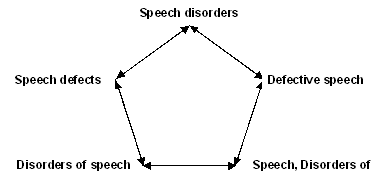3. Structures of Controlled Vocabularies
Controlled vocabularies are structured to enable displaying the different types of relationships among
the terms they contain. There are four different types of controlled vocabularies, determined by their
increasingly complex structure. These are:
• List
• Synonym ring
• Taxonomy
• Thesaurus

Figure 5: Increasing structural complexity among controlled vocabularies
This figure shows the increasingly complex structure of controlled vocabularies dictated by the
requirements of the types of relationships each must accommodate. It also shows that the more
complex vocabularies (taxonomies, thesauri) include the simpler structures (lists, synonym rings).
For example, a Thesaurus includes explicit devices for controlling synonyms, arranging hierarchies,
and creating associative relationships while a List is a simple set of terms containing no relationships
of any kind.
Refer to
Section 7 for a comparison of the four types.
3.1 List (5.4.1)
A list (also sometimes called a pick list) is a limited set of terms arranged as a simple alphabetical list
or in some other logically evident way. Lists are used to describe aspects of content objects or
entities that have a limited number of possibilities. Examples include geography (e.g., country, state,
city), language (e.g., English, French, Swedish), or format (e.g., text, image, sound).
3.2 Synonym ring (5.4.2)
While a synonym ring is considered to be a type of controlled vocabulary, it plays a somewhat
different role than the other types covered by this Standard. Synonym rings cannot be used during
the indexing process. Rather, they are used only during retrieval. Use of synonym rings ensures
that a concept that can be described by multiple synonymous or quasi-synonymous terms will be
retrieved if any one of the terms is used in a search.
A synonym ring, therefore, is a set of terms that are considered equivalent for the purposes of
retrieval. Synonym rings usually occur as sets of flat lists. A synonym ring allows users to access all
content objects or database entries containing any one of the terms. Synonym rings are generally
used in the interface in an electronic information system, and provide access to content that is
represented in natural, uncontrolled language.
Example 3: Synonym ring for speech disorders

3.3 Taxonomy (5.4.3)
A taxonomy is a controlled vocabulary consisting of preferred terms, all of which are connected in a
hierarchy or polyhierarchy.
Example 4: Taxonomy hierarchy

3.4 Thesaurus (5.4.4)
A thesaurus is a controlled vocabulary arranged in a known order and structured so that the various
relationships among terms are displayed clearly and identified by standardized relationship indicators.
Relationship indicators are usually employed reciprocally.
Example 5: Print thesaurus entry:

Source: DTIC Thesaurus
Example 6: Online thesaurus entry:

Source: AGROVOC
| Table of Contents |
| 1. Why Vocabulary Control | 2. Principles | 3. Structures | 4. Semantic Relationships |
| 5. Displays | 6. When to use | 7. Examples of use | 8. About Z39.19 |
©NISO, 2005 http://www.niso.org/
Source: Based on ANSI/NISO Z39.19-2005 ISBN: 1-880124-65-3
Guidelines for the Construction, Format, and Management of Monolingual Controlled Vocabularies






